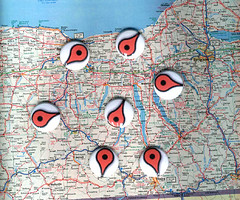On August 1 we begin the post-residency and final portion of our field school. This portion will end August 15. Based on the presentations you gave in Beijing, a draft of the final assignment is due to be posted on the course blog on August 7. Unless we are notified we will assume that it will be posted on or before that date. We will have comments back to you on August 10. This post should be finalized on or before August 15.
For this portion of the field school, participants, working in teams, will be responsible for (at minimum):
* 2 postings for the course blog – one associated with each of the two fieldwork sites; categorize these as “field report” so that they are also posted to Vine Online!
To review, each post will include:
* interpretive text (formatted according to VineOnline standards; 750-1000wds)
* image gallery (7-10) AND/OR edited video (>5min) depicting one of the following and or a combination of the two:
– work/context of an artist interviewed (INDIVIDUAL FOCUS)
– work/context for an discrete aspect of cultural/artistic production (HERITAGE FOCUS)
– work/context for a geographic area/setting (PLACE FOCUS)
Full guidelines can be found here.
In support of your posts to the course blog, each team will create postings on the social media sites connected to ChinaVine (English & Chinese language) that points to their course blog content. This can include a tweet using the field school hashtag (#CVFS), a Facebook post on ChinaVine wall, etc.
Each team should create drafts of their planned posts on the field school website for comments by Doug, John, and other field school participants by August 7. These comments can be transmitted via email, or embedded in the draft itself (using brackets or some other easily identifiable format). It will be important to have some idea of where the video/photo editing process and text creation stands at that time so that teams can move ahead with finalizing their posts.
All final posts should be completed by August 15. Doug and John should be notified of how the links to the posts occurred through social media.
During these last two weeks of the field school you should feel free to consult with us at any time regarding the final assignment and/or any aspect of the field school.





 Recorded from
Recorded from 

















